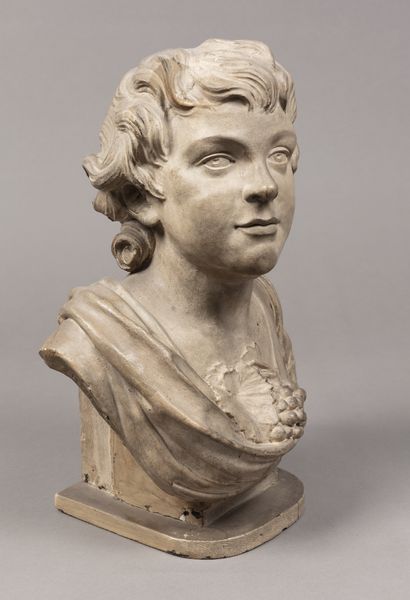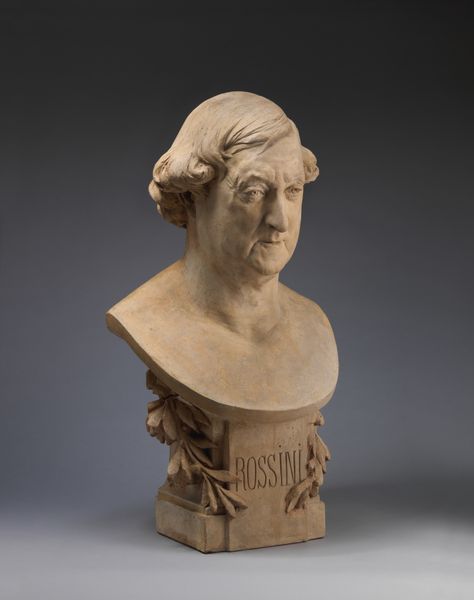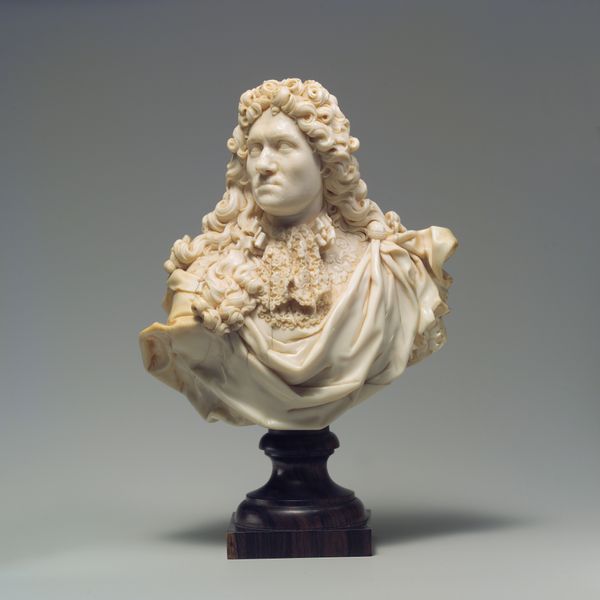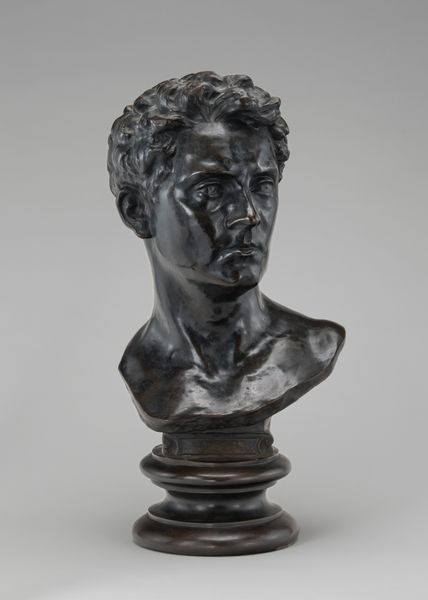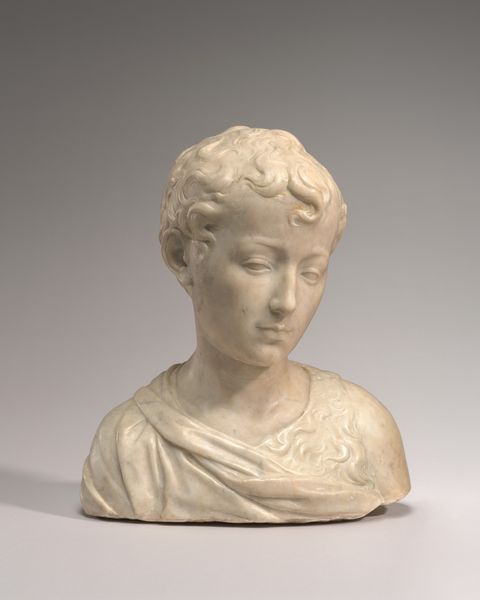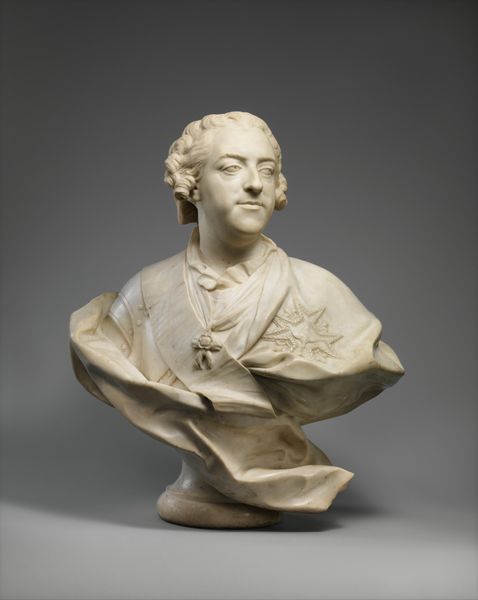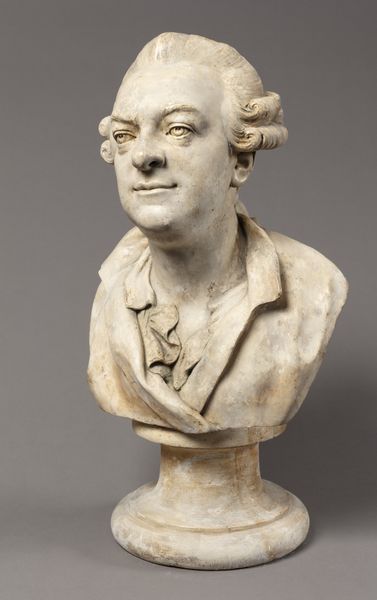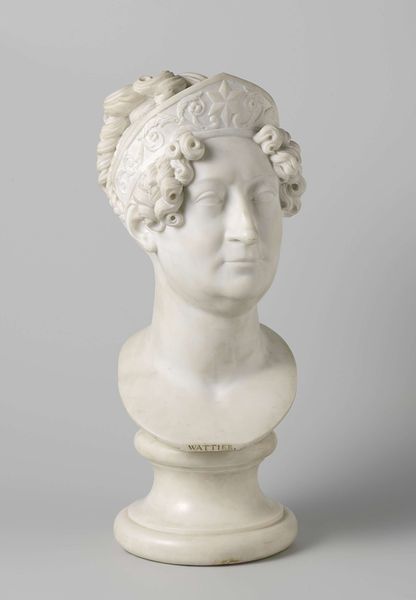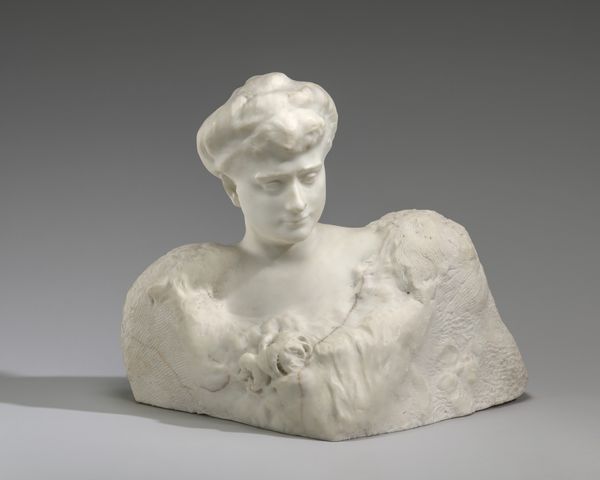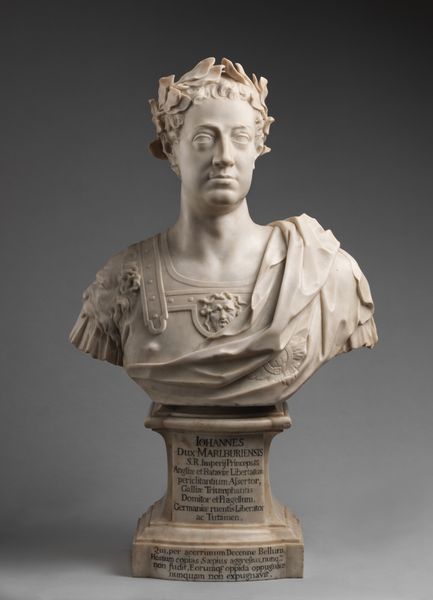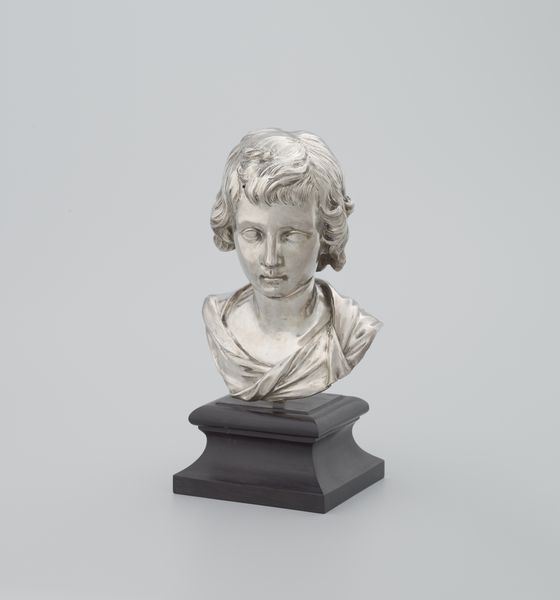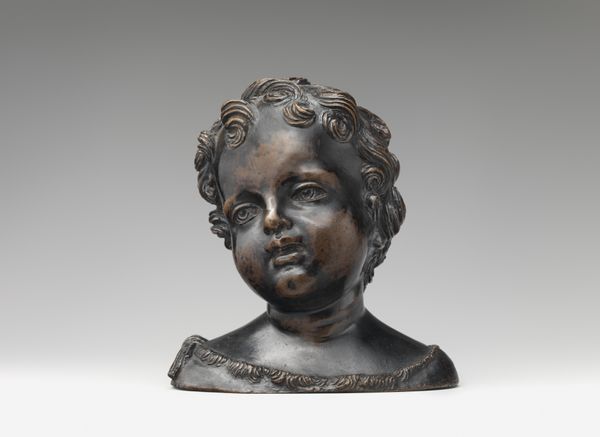
Dimensions: overall: 45.7 x 47.6 x 37.5 cm (18 x 18 3/4 x 14 3/4 in.)
Copyright: National Gallery of Art: CC0 1.0
Editor: Here we have Rodin’s marble sculpture, "Victoria Sackville-West, Lady Sackville," created between 1913 and 1914. It’s a captivating portrait, isn't it? It strikes me as contemplative, almost melancholic. What captures your attention most in this work? Curator: Melancholy is a good word for it. The rough texture of the marble gives a sense of immediacy, as though Rodin just stepped away, doesn't it? Her gaze is introspective, like she's carrying secrets in the gentle curve of her lips. Editor: Absolutely, that impasto finish does make it feel so fresh. Do you think the texture contributes to the emotion that comes through? Curator: Undoubtedly! The unfinished quality brings us closer, making it less about idealized beauty and more about capturing a fleeting moment of raw emotion. Look how the shawl cradles her form, almost protective, suggesting both vulnerability and resilience. What story does that tell you, do you think? Editor: I hadn't considered the shawl's protective aspect. It now seems less about covering and more like shielding. It brings out this idea of internal strength, that she is going through something. Curator: Precisely! It transforms the reading of the portrait. Perhaps Rodin sensed that duality within her. These imperfections and open narratives are really what Rodin was interested in portraying. Editor: It’s incredible how much nuance he could convey with marble and this approach to texture. I never considered how much information you could take from how "unfinished" it feels. Curator: Indeed. The magic lies in how Rodin transformed inert stone into a vessel brimming with human emotion. And for me it encourages us to think more broadly, not to just see art, but to feel and interact with it.
Comments
No comments
Be the first to comment and join the conversation on the ultimate creative platform.

